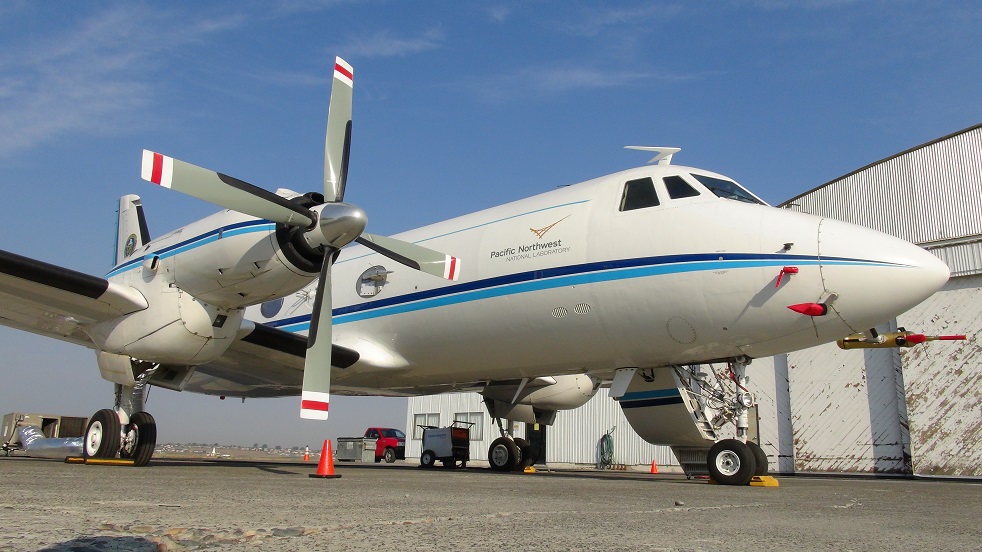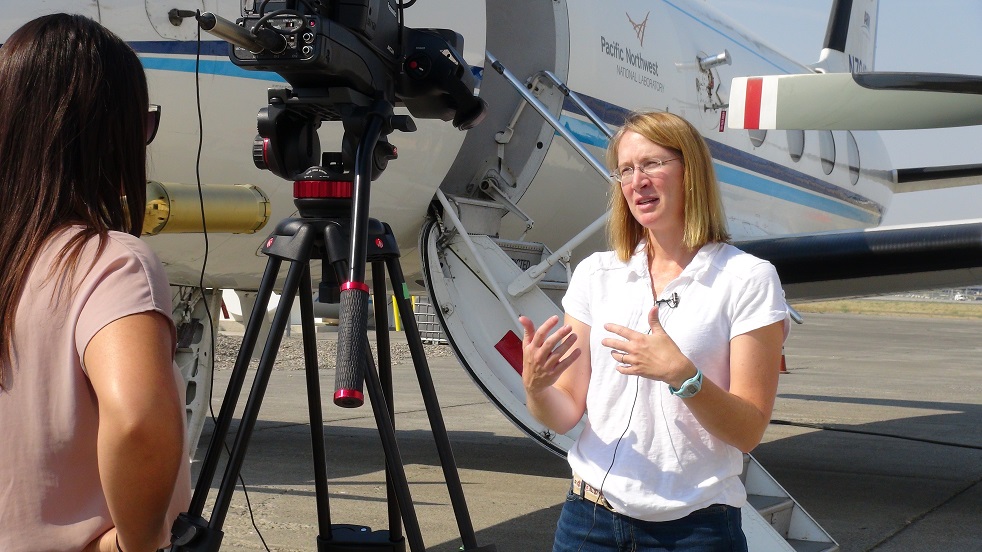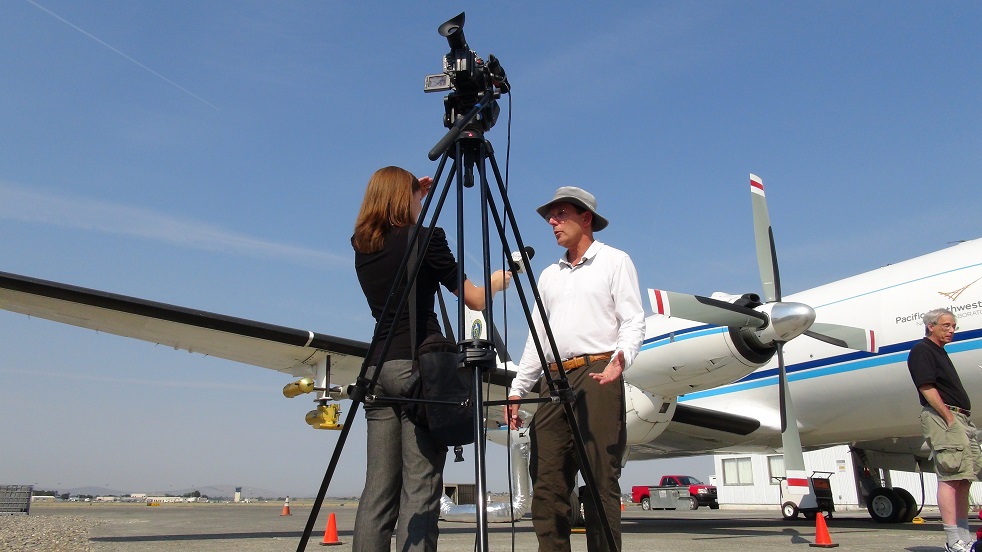BBOP Media Stop
Published: 10 September 2013
Editor’s note: Eric Francavilla is an intern in the media relations department at Pacific Northwest National Laboratory.
On August 15, I joined Mary Beckman of the Pacific Northwest National Laboratory (PNNL) media relations team for a media event held at the Biomass Burning Observation Project (BBOP) base of operations: a small hangar at Bergstrom Aircraft in Pasco, Wash. We invited reporters to see how scientists from the Department of Energy’s Brookhaven National Laboratory and PNNL have teamed up to fly through forest fire smoke across the Northwest in the name of science.

That’s right. Scientists on a plane. No, it’s not another awful movie starring Samuel L. Jackson. But the research will benefit our understanding of where smoke from burning biomass, such as forest fires, fits into global climate models. Pretty smokin’.
Before I get your hopes up, I didn’t get to ride in the plane, let alone fly it. But as a summer intern, I was excited about helping with this event by live tweeting, taking video and photos, and interacting with scientists and reporters.
The first reporter pawed at the hangar’s gates a half hour before the event, so I wasn’t the only one itching to get started.
After briefly introducing the research team and project, we cut loose the media to do what they do best: ask questions. Reporters are a curious breed, but I think they met their match with the scientists, who talked about everything between macro climate models and particle-level interactions.

Of course, the 18-ton flying gorilla on the tarmac got some attention too. The twin turboprop Gulfstream-159 (G-1) looks like a corporate plane, but instead of fancy in-flight dinners and champagne, the plane carried stacks of research equipment—more than 30 instruments to measure biomass burns. The most visible instruments look like a cross between gilded bombshells and ray guns attached to the wings—they’re harmless, unless you’re a piece of soot hundreds of feet in the air. Less menacing instruments dotted the fuselage, including a glass hemisphere under the plane, called a “sunshine pyranometer,” that measures light radiating back from the Earth’s surface.
I knew the plane had flown through the smoke of several forest fires that week, but I was still surprised to see ash splattered on the plane like bugs on a windshield.
The scientists love flying. They said it’s important for researchers to get out into the field, and what better place to make your lab than the sky? The instruments, however, aren’t big fans of planes. Many are sensitive to heat, and the sunbaked tarmac is their bane. Thankfully, the instruments had life support: an industrial air conditioner hooked up to the plane via a giant silver tube.
Interns are sensitive to heat too, you know, so I jumped at the opportunity to step inside the plane to do some work. Along with the reporters, I soon learned that instruments crowd most of the plane, leaving little room for visitors. Except for four seats in the back for the science crew, there is barely standing room. Cell phones are not allowed onboard, because their signals interfere with the equipment, the scientists said. I think it’s because the soot photometer is tweeting all the time.
Ok, maybe it was me tweeting.
When my phone wasn’t in airplane mode, I used the hashtag #LabFlights to tweet updates on the event: I fielded questions, shared quotes from the researchers and posted photos. It turns out that high school students aren’t the only ones on Twitter. I interacted with scientists, media, and even a Congressional committee via tweets.
Though I did catch some of the interviews, I left the stories to the reporters. You can check out the news coverage on the BBOP web page.
Instead, I will share these insights: First, PNNL scientist John Hubbe looks good in a sun hat, forever proving that nerds are in fact fashionistas.

Second, science is endlessly complex. One reporter learned that asking about any instrument on the plane could lead to a 15-minute conversation. But the scientists navigated the topics as naturally as pilots navigate the sky.
Eric Francavilla
The ARM Climate Research Facility is a DOE Office of Science user facility. The ARM Facility is operated by nine DOE national laboratories, including .
Keep up with the Atmospheric Observer
Updates on ARM news, events, and opportunities delivered to your inbox
ARM User Profile
ARM welcomes users from all institutions and nations. A free ARM user account is needed to access ARM data.


















